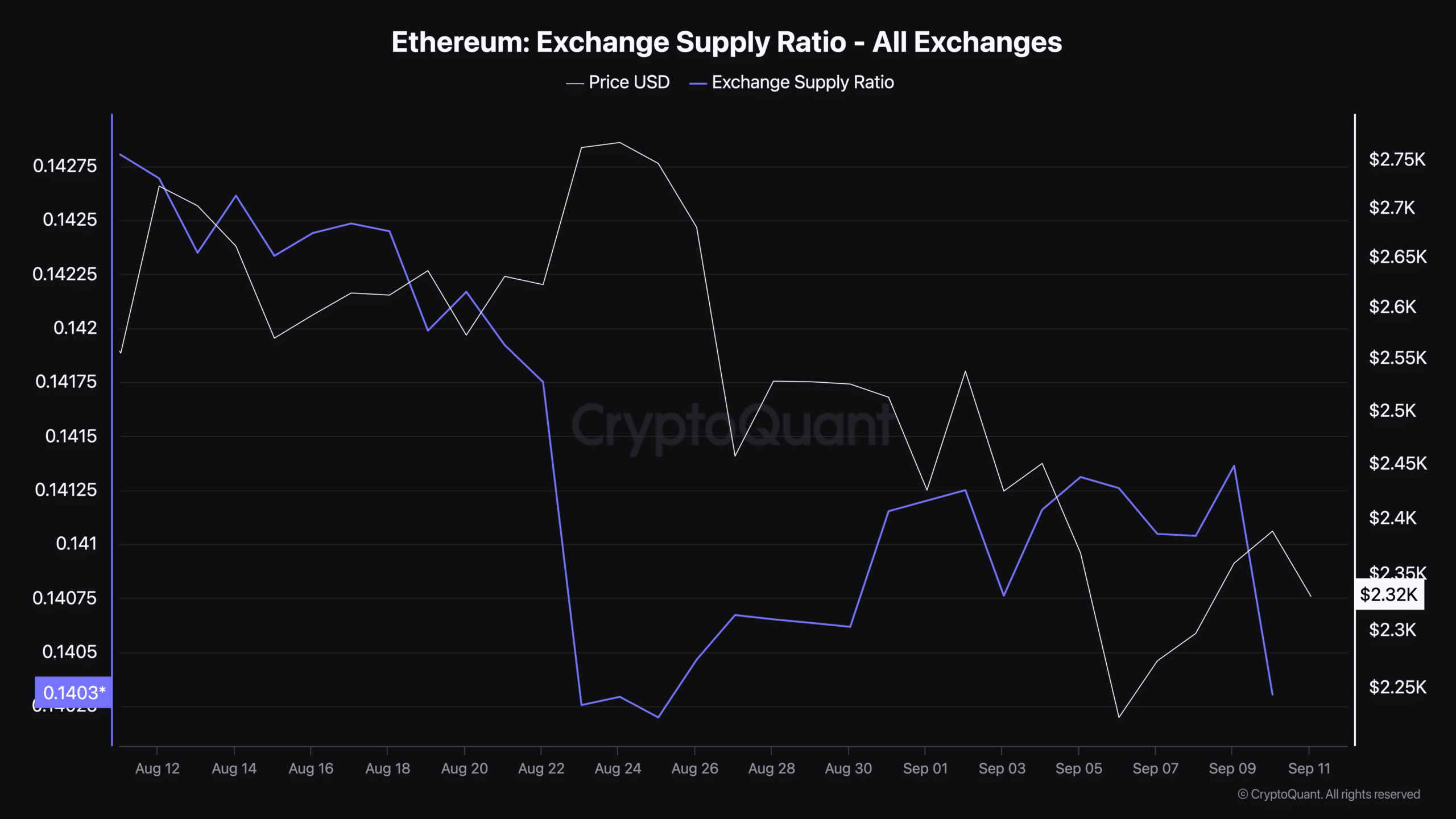[ad_1]
- Ethereum has declined 2% in the past week, with the key resistance at $2,850 signaling potential recovery.
- On-chain data showed increased active addresses, hinting at renewed interest and potential price stabilization.
Ethereum [ETH], the second-largest cryptocurrency by market capitalization, has seen a continued downturn that began in August and has now extended into September.
At the time of writing, ETH was trading at $2,338, following a 1.3% decline in the past 24 hours and a 2% drop over the past week.
The asset has failed to register any significant rally since the start of the month, leaving investors concerned about its short-term trajectory.
Long road ahead
Prominent crypto analyst, Dean Crypto Trades, recently shared his outlook on Ethereum, noting that the downward trend might persist for a while. In a post on X, the analyst remarked,
“ETH has seen a solid bounce from support so far. However, I reckon it will continue to be choppy while the price is trading within the $2,100-$2,850 range.”
He further emphasized that the key resistance level for Ethereum is $2,850, adding,
“The bulls know what they need to do to get things going, but it’s going to be a long road.”
This suggested that while there may be a path to recovery, it could take time before Ethereum can break free from its current trading range and regain bullish momentum.
Assessing Ethereum’s fundamentals
Despite the bearish sentiment in Ethereum’s price action, some underlying metrics provide a glimmer of hope for potential recovery. One crucial factor to consider is the level of retail interest in the network.
Data from Glassnode shows that Ethereum’s active addresses peaked at over 589,000 on the 14th of August, but have since seen a significant decline, dropping to as low as 377,000 by the end of August.
However, since the beginning of September, there has been a steady recovery in active addresses, which now stand at over 438,000.
This increase in active addresses could indicate renewed interest from retail investors, potentially supporting the asset’s price in the coming weeks.
The rise in active addresses often correlates with increased network activity, which, in turn, can help drive demand for ETH and support price levels.
Another fundamental metric worth analyzing is Ethereum’s exchange supply ratio, which measures the percentage of the total ETH supply held on exchanges.
According to CryptoQuant, this ratio currently stands at 0.141 as of today.
Read Ethereum’s [ETH] Price Prediction 2024–2025
A lower exchange supply ratio generally suggests that investors are moving their assets off exchanges and into cold storage, indicating that they are less likely to sell in the short term.
This could reduce the selling pressure on ETH, allowing for more price stability. However, it is also essential to monitor this metric closely, as any significant shift could signal a change in market sentiment.
[ad_2]
Source link






